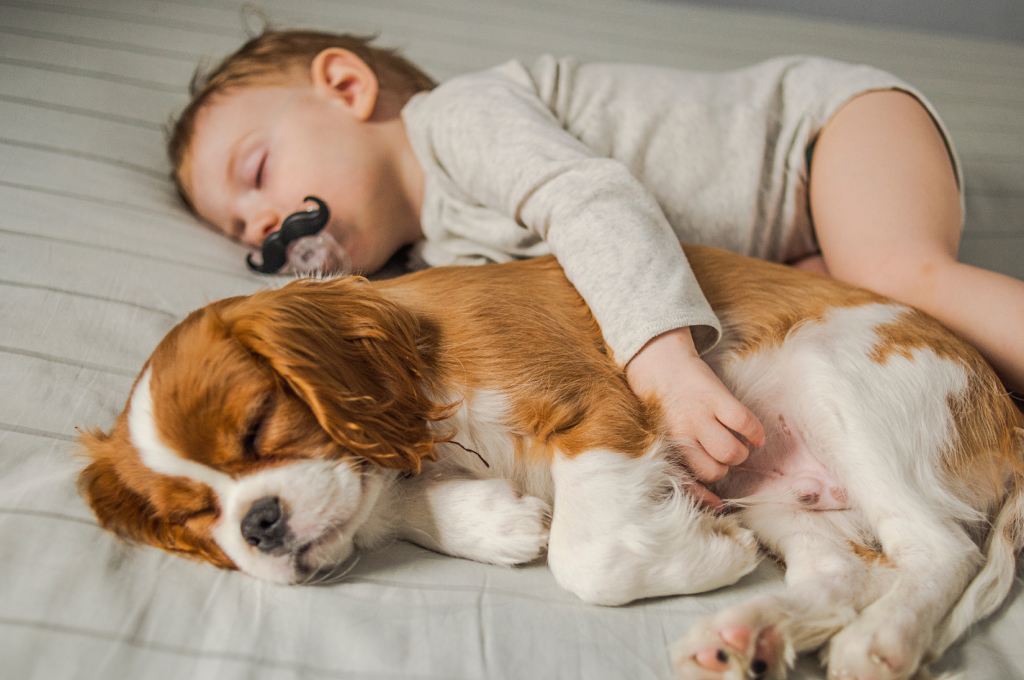When to Sleep Train for Naps and Nights
 By
Mellow Editorial Team
·
3 minute read
By
Mellow Editorial Team
·
3 minute read

One common question in parenthood isn’t just about when to start sleep training, but also understanding the signs of readiness and safety for this big transition. We're here to guide you through this question, with the understanding that every child is different and has varying temperaments and needs.
Let’s learn how to recognize the signs if your little one is ready for the leap into independent sleep.
Is there a perfect age to learn independent sleep?
Six months is generally agreed to be a good time to sleep train baby. However, some babies might be ready as early as four months. It’s important to follow your baby’s development and growth to determine when the time is right. There isn’t a one-size-fits-all answer when it comes to when to sleep train for naps and nights.
Why wait until Four to Six months?
-
Internal clock: A magical thing happens by the time babies hit the four to six-month mark – they start developing what’s known as circadian rhythms. This simply means your baby is beginning to differentiate between day and night. Their internal clock finally starts ticking and aligning more with the adult world's schedule. This alignment is crucial because it supports the development of more predictable sleep patterns.
-
Melatonin Entrance: Melatonin - a hormone released in response to darkness - rises naturally in baby around four months of age. This uptick in melatonin helps your baby sleep for longer periods and also regulates the body’s circadian rhythm.
-
Self-Soothing: By 4 to 6 months of age, self-soothing behaviors begin to appear during sleep time and nighttime awakenings which increase in intensity until 1 year.
Signs of Independent Sleep Readiness: Is my baby ready to go from awake to asleep without lots of support?
Here’s a short checklist to determine when your baby is ready to sleep train
-
Health Check: A healthy baby is a ready baby! Visit your pediatrician to ensure your baby is in stable health and free of common infant challenges like reflux or ear infections.
-
Self-Soothing signs: Is your 4-6 month-old beginning to find their thumb or a pacifier for comfort? This is an indicator that baby is starting to manage their own comfort - a big step towards learning independent sleep.
-
Create environmental cues: You can play a big role here! Mimic the natural rise and fall of light from day to night in your home. Bright days and dark, quiet nights help reinforce their internal clock, teaching them when it’s time to power down for sleep. This can start as early as possible to help their rhythms mature. Baby’s naps can also benefit from being in a quiet, dark room - but if your life needs some flexibility, just know that a nap in a bright environment can still happen but won’t be perfect.
Sleep training is a journey that involves both benefits and limitations - it can lead to better sleep for the entire family, but it may come with some stress and tears in the beginning. The American Academy of Pediatrics recommends putting your baby to sleep in their space when they are drowsy but not already asleep. Once they learn to fall asleep independently, everyone’s bedtime becomes easier and involves fewer wakings at night. When deciding when to sleep train for naps and nights, it's vital to be responsive to your child’s needs and seek guidance if they show signs of excessive distress.
At Mellow, we get it. We’ve been there, and we’ve got the under-eye bags to prove it!Our guides are based on science, and the understanding that every family needs a gentle approach to find what works for them. Read our article on the evidence behind sleep training for the science and tips behind safe sleep training.If you decide to sleep train, its important to choose an approach that feels right for you. Mellow's sleep training process is based on building your baby’s feelings of safety as the distance increases, through our gentle approach to sleep.To know more and get early access to the Mellow app, sign up to our waitlist here - Get Early access to Mellow
Sources
-
Night Waking, Sleep-Wake Organization, and Self-Soothing in the First Year of Life, Beth L. Goodlin-Jones, September 2001, Journal of Developmental & Behavioral Pediatrics 22(4):226-33
-
Getting rhythm: how do babies do it? Epub 2014 Sep 22. Desaline Joseph Nelson W Chong, Morag E Shanks, Ezio Rosato, Nick A Taub, Stewart A Petersen, Michael E Symonds, William P Whitehouse, Michael Wailoo
-
Sleep and melatonin in infants: a preliminary study. Sleep. 1997 Mar;20(3):185-91. A Sadeh
-
American Academy of Pediatrics: Getting your baby to sleep
-
UC Davis health: Helping children sleep
-
Cleveland clinic: Sleep in your baby’s first year